- Email: contact@pakwancenter.com
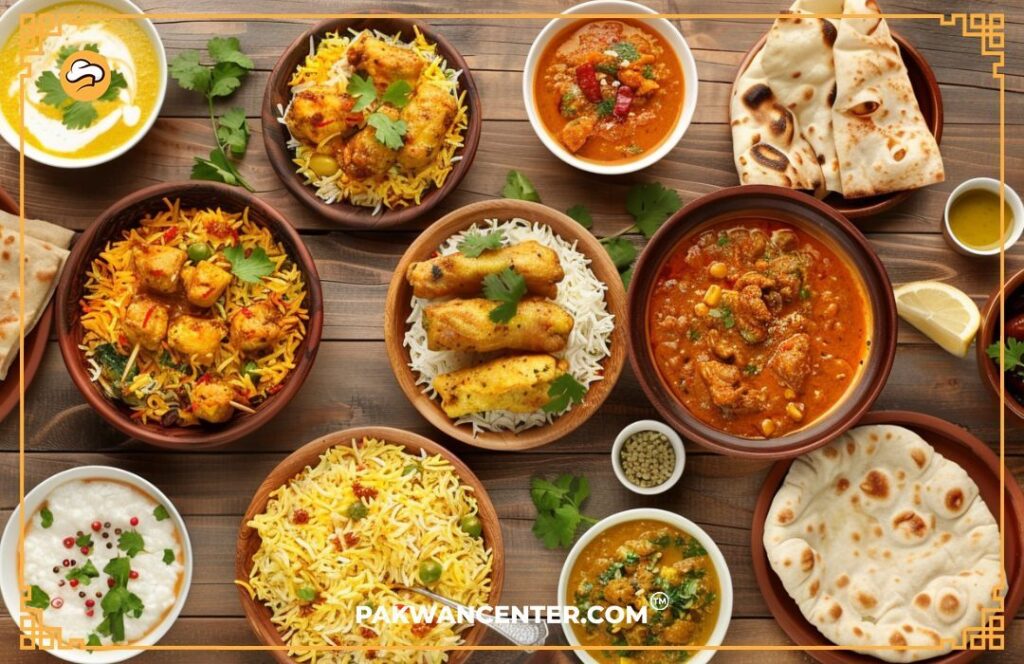
Explore the best Pakistani food to eat in Lahore with a Pakwan center.com guide. Discover top local dishes and must-try restaurants in Lahore for an authentic culinary experience.
Pakistani cuisine, often overshadowed by its Indian counterpart, is a rich and diverse culinary tradition that deserves greater recognition. Established in 1947 after the partition from British India, Pakistan is a relatively new country with a predominantly Muslim population. However, its culinary heritage has deep roots, influenced by neighboring India, Afghanistan, and Iran.
In the eastern provinces of Punjab and parts of Sindh, the cuisine is known for being highly seasoned and spicy, closely resembling Indian food. In contrast, the culinary traditions of Azad Jammu and Kashmir, Balochistan, Khyber Pakhtunkhwa, and Gilgit-Baltistan are milder, reflecting the flavors of Afghanistan, Iran, and the Middle East.
For those looking to explore the best Pakistani food to eat in Lahore, the city offers a vibrant and diverse culinary scene. Lahore, known as the food capital of Pakistan, is famous for its rich, flavorful dishes. From the spicy and savory flavors of Lahori chargha and nihari to sweet delicacies like falooda and jalebi, there is something to satisfy every palate.
Pakistani cuisine is a testament to the country’s rich history and cultural diversity, offering a delectable journey through its various regions and influences. When in Lahore, don’t miss the opportunity to indulge in the best Pakistani food at pakwan center.com the city has to offer, providing a true taste of this vibrant and flavorful cuisine.
The history and culture of Pakistani food are deeply rooted in both Indo-Aryan and Iranian influences, as well as Muslim culinary traditions. The Indus Valley Civilization, thriving during the Bronze Age, showcased early examples of organized food preparation in the region. By around 3000 BCE, the inhabitants of the Indus Valley had domesticated sesame, eggplant, and humped cattle, and were cultivating spices such as turmeric, cardamom, black pepper, and mustard. Wheat and rice have been staple crops in this area for over a thousand years.
The arrival of Islam in South Asia through trade and periodic conquests significantly impacted local food traditions. Given Pakistan’s Muslim-majority population, the cuisine adheres to Islamic dietary laws, which prohibit the consumption of pork and alcohol. This has led to a culinary focus on other meats like beef, lamb, poultry, and fish, alongside a variety of fruits, vegetables, and dairy products.
Pakistani cuisine is renowned for being rich, spicy, and ghee-laden, offering a delectable array of flavors. In this list of 17 dishes to eat in Pakistan, we will introduce you to some of the best and most iconic dishes the country has to offer. Get ready for an unforgettable culinary journey through the rich and diverse flavors of Pakistani food. Without further ado, let’s explore the delicious world of Pakistani cuisine.
Starting our list, let’s explore Nihari, widely regarded as Pakistan’s national dish.
For anyone exploring Pakistani cuisine, Nihari stands out as a culinary revelation. It’s undeniably one of the finest breakfast experiences you can have anywhere in the world.
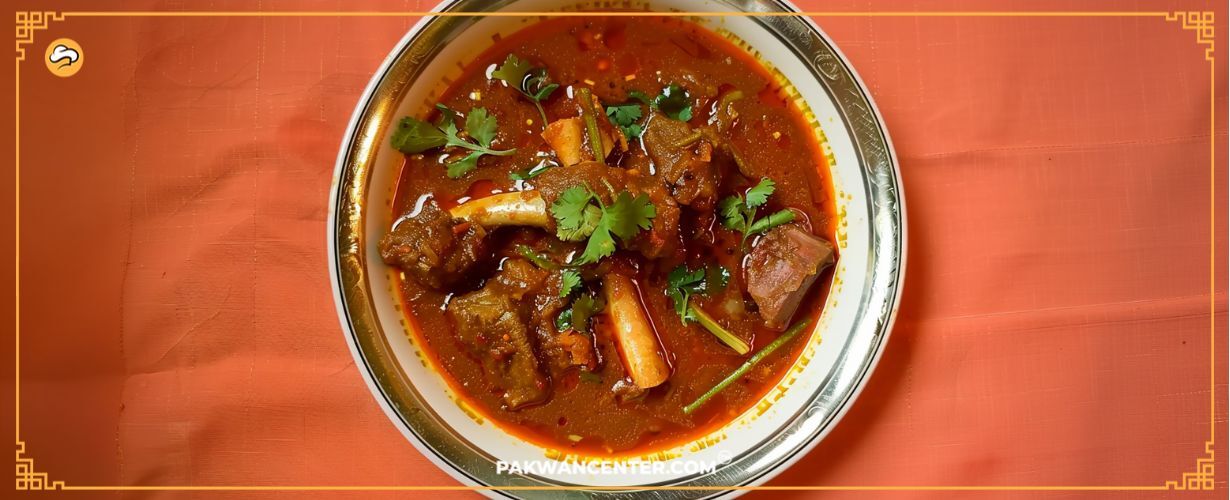
The preparation of Nihari begins with a blend of dried spices, which are sautéed in a mix of vegetable oil and animal fat. Tender meat, usually beef shank, is then added, along with a generous amount of Desi Ghee, or homemade clarified butter. This rich, slow-cooked stew is simmered to perfection in a grand saucepan, resulting in a flavorful and hearty dish that exemplifies the essence of Pakistani cooking.
The meat chunks in Nihari are richly immersed in desi ghee, creating a thick, flowing consistency. The combination of spices and ghee imparts a deep red hue to the dish. Nihari is typically served on communal platters, accompanied by a side plate of aromatic sliced ginger, zesty green chilies, and a squeeze of fresh lime or two.
Halwa puri stands out as a quintessential Pakistani breakfast beloved by many.
This dish is renowned for its ability to bring a sense of deep satisfaction and, at times, a pleasant feeling of laziness for the rest of the day. Among Pakistan’s most cherished breakfasts, Halwa Puri is a true favorite.
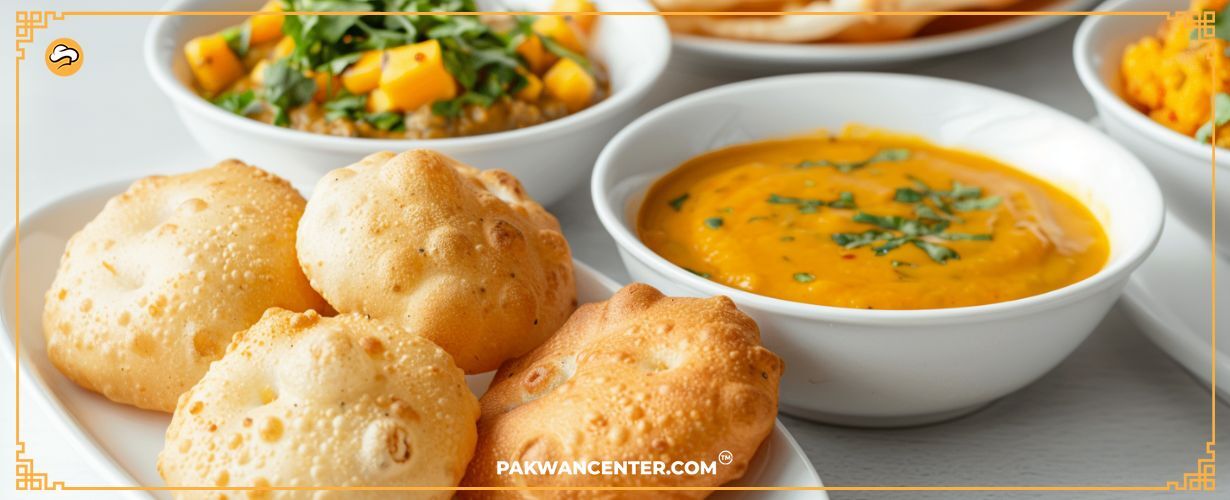
The puris are made from thinly rolled layers of dough, which create multiple ultra-crispy layers once fried in boiling oil or desi ghee. The unique folding technique causes the puris to puff up beautifully when immersed in the hot oil or ghee. These crispy puris are typically paired with halwa, a delightful pudding made from semolina. Additionally, chickpea curry often accompanies this meal, adding a savory touch to the combination.
Just a few hours’ drive from Pakistan’s KP Province lies Kabul, the capital of Afghanistan, where Kabuli Pulao originates. Imagine the Silk Road traders bringing the first servings of this flavorful dish to Western Pakistan.
Kabuli Pulao can be prepared with various sizes of rice grains, which are first fried in oil and then mixed with an array of dry spices. Typically, each substantial batch includes a generous piece of mutton or beef, sometimes an entire leg.
The rice is infused with saffron, giving it both a distinctive flavor and vibrant color. While the spices are generally milder compared to biryani, the dish is enriched with a delightfully sweet aroma from whole cardamom cloves and golden sultana raisins. In larger establishments, peanuts and even pistachios might be added as a garnish, enhancing the dish’s texture and taste.
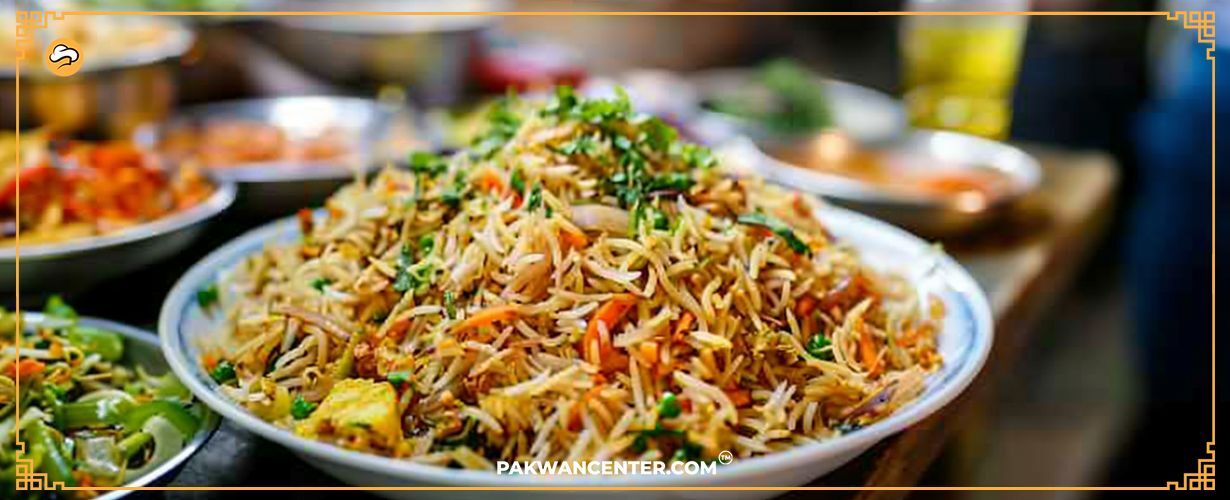
Pulao is easily recognizable on the street by its large stainless steel cooking vessel, which often has a distinctive bell-like shape and is frequently positioned at an unusual 45-degree angle.
Kabuli Pulao stands out with its delightful aroma, attractive appearance, and, of course, its delectable taste. It’s an excellent choice for a satisfying lunch while exploring the vibrant streets of Pakistan’s major cities, especially around Peshawar.
Karahi is a beloved staple of Pakistani cuisine, cherished by people across the country. Whether being prepared at a modest roadside stall or in the luxurious kitchen of a local Rajah, Karahi is a culinary delight.
Named after the distinctive black, iron, scoop-shaped pan in which it is cooked, Karahi dishes are typically made with goat meat but can also feature chicken or shrimp. The metal pan often doubles as a serving bowl, delivering piping hot food straight to the table.
Traditional Pakistani Karahi recipes involve tomatoes, onions, and various animal fats. The dish’s rich umami flavor is achieved through a tomato-based broth infused with smokiness, tender meat, and a generous amount of fat from the meat, ghee, and sometimes a touch of cream.
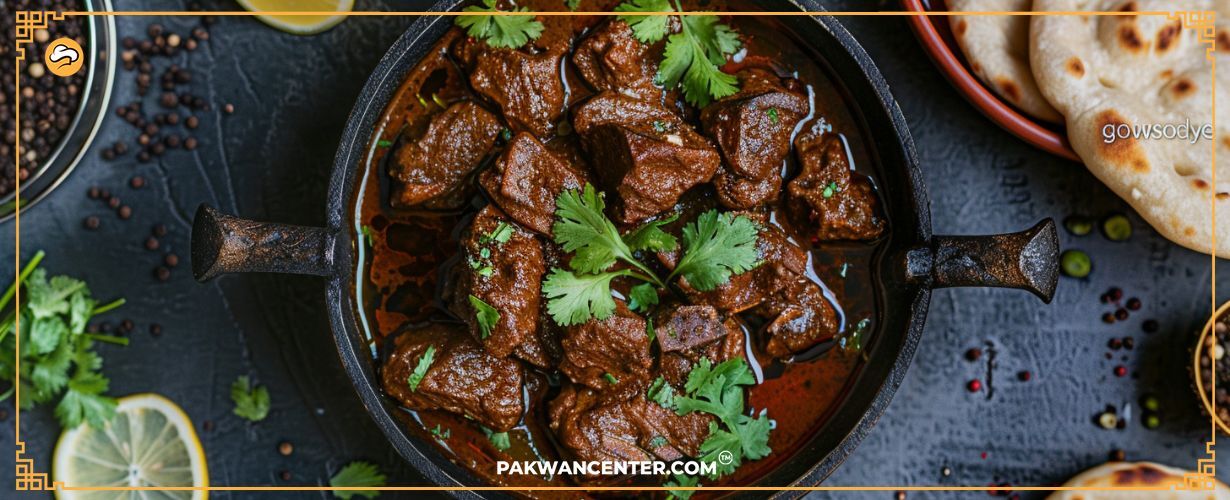
To prepare Karahi, a large pair of pliers is used to handle the pan, and a metal spatula is employed to move the meat around. Each dish is cooked over intense heat, with a precise routine: add oil, then meat, count to three and stir. Additional oil is added, followed by quick spice incorporation, transferring the entire dish to a serving plate, and a moment of respite as the chef wipes their brow.
This iconic Pakistani meal is widely enjoyed throughout the country, known for its robust flavors and satisfying qualities.
A traditional Pakistani dish, Haleem is a nourishing meal made from a blend of barley, local wheat varieties, and chickpeas. This dish showcases the Middle Eastern influence on Pakistani cuisine and has been enjoyed for generations.
The distinctive, comforting flavor of Haleem comes from its slow-cooking process, which can last up to an entire day on very low heat. In the cooking pot, fried onions, mint leaves, green and dried chilies, and a variety of masala spices are combined. At the end of cooking, generous squeezes of lemon juice are added to enhance the flavor.
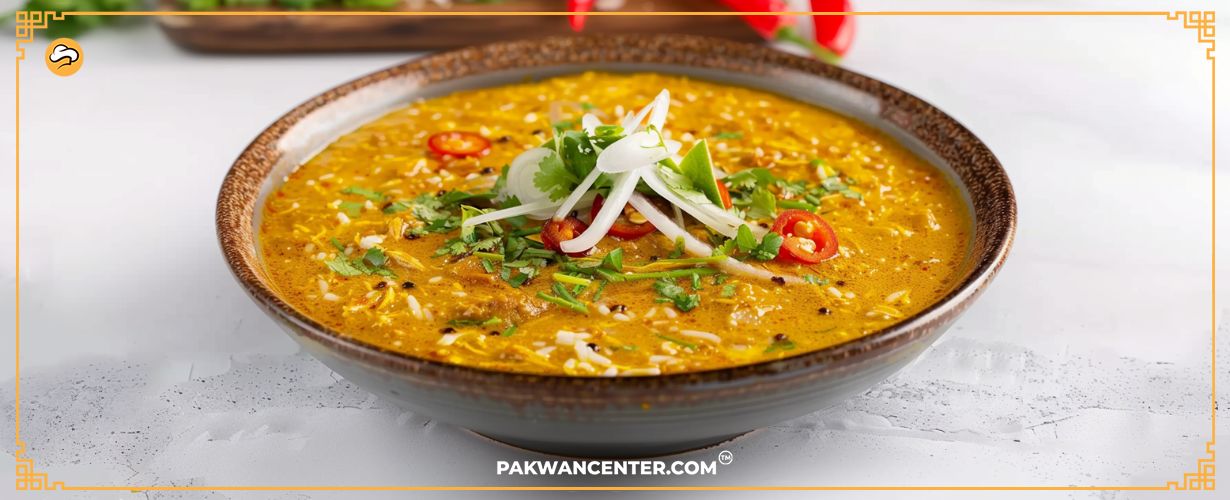
Haleem is an excellent choice for breakfast or an early lunch. It’s highly filling and packed with calories to keep you energized throughout the day. A bowl of Haleem, paired with roti and accompanied by a few glasses of milk or green tea, offers such a satisfying meal that you’ll feel perfectly content.
No traditional Punjabi dinner is complete without at least one mutton dish, and mutton korma is often the star of the show.
This rich and hearty dish features exceptionally tender chunks of sheep or goat meat, bathed in a dark crimson spice blend.
From the heights of Pakistan’s Himalayas to the depths of the Indian Subcontinent, many people long for the comforting taste of their mother’s mutton curry. In Pakistan, particularly in Lahore, you can find some of the finest mutton curries, with mutton korma standing out as a must-try. This flavorful dish is a culinary treasure that embodies the essence of traditional Punjabi cuisine.
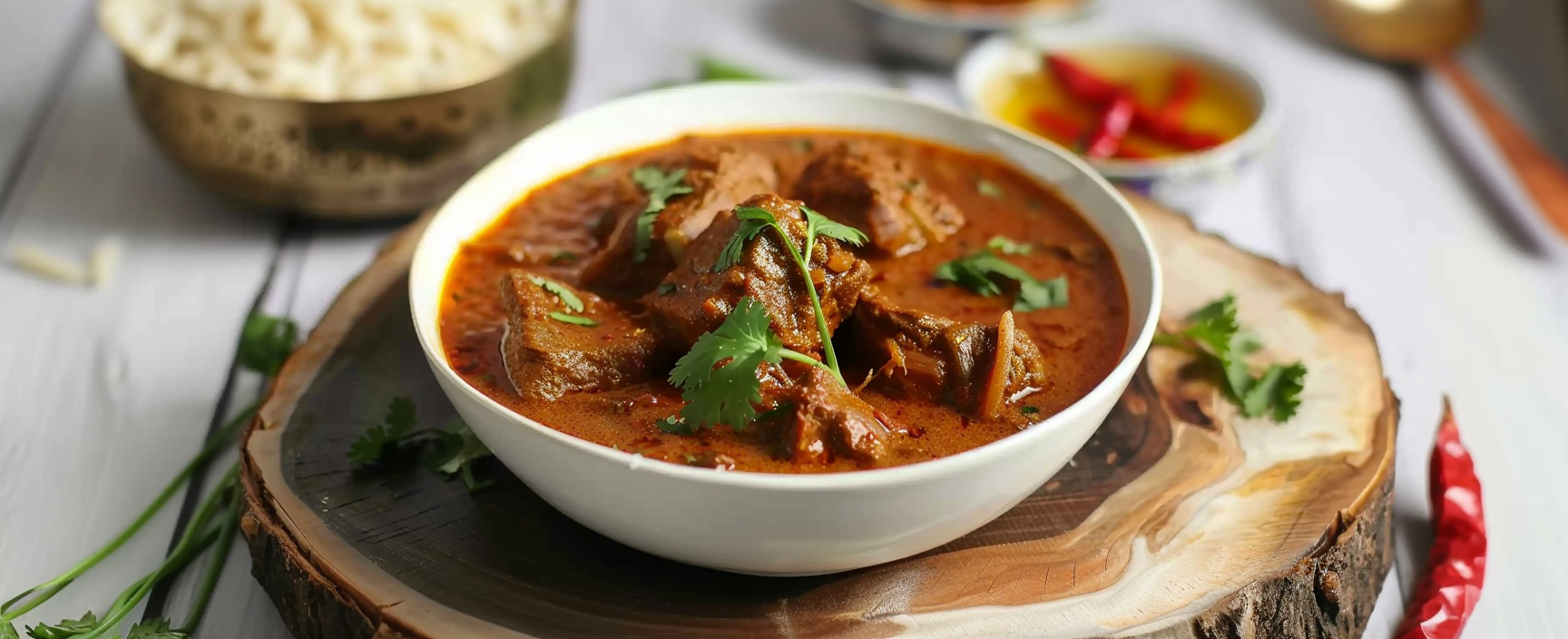
Saag is a beloved dish originating from the Punjab region in Pakistan. The term “saag” translates to “mustard greens,” but the dish often includes various other ingredients. The mustard greens are slow-cooked until they reach a soft, stew-like consistency. Common seasonings include mint, coriander, and chili flakes, along with generous amounts of rich desi ghee. However, more adventurous variations can be found across Pakistan. For example, in the northern town of Skardu, you can savor a unique version with large chunks of mutton. The Peshawari Grandfather, shown in the photo above, offers a distinct saag that’s tangy (possibly made with mustard greens), remarkably healthy, lightly seasoned, and served cold—perfectly refreshing.
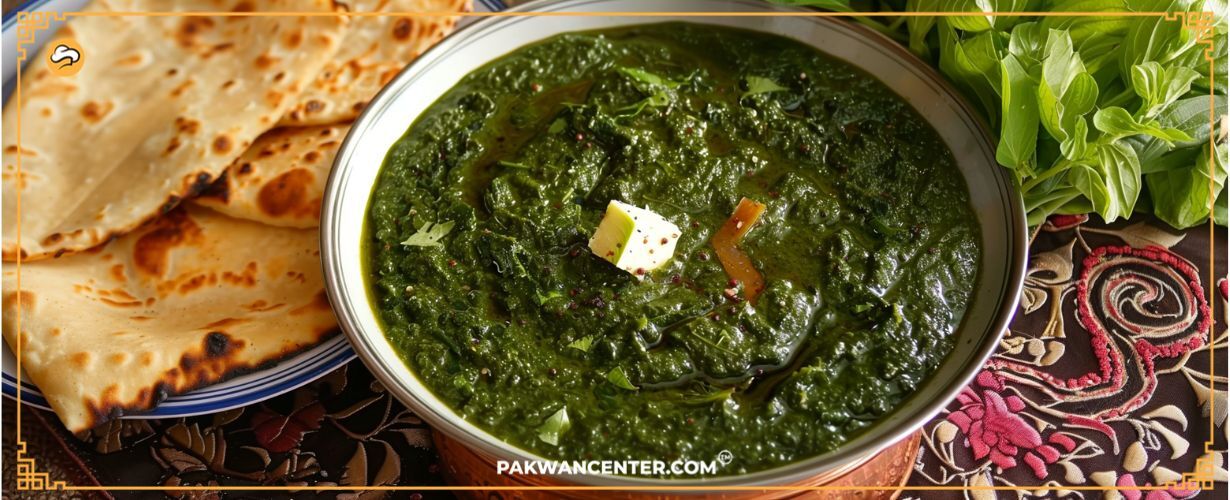
After indulging in Pakistan’s hearty meat dishes, you’ll find the cold, refreshing tradition of drinking lassi to be a welcome respite, perfect for any time of day, whether it’s breakfast, lunch, or a mid-day treat.
Lassi is simply the name of the drink, with variations often specified in English as ‘salt lassi,’ ‘sweet lassi,’ or fruit-infused versions like mango lassi. Most Pakistani lassi recipes are made from scratch, making it fascinating to watch as each cup of milk transforms. Some versions, particularly those with cream or butter, even involve the chef hand-churning the mixture. While some lassis are very simple, made with just yogurt, sugar, and ice water, others, like the one shown above, boast layers of creative flavors and textures.
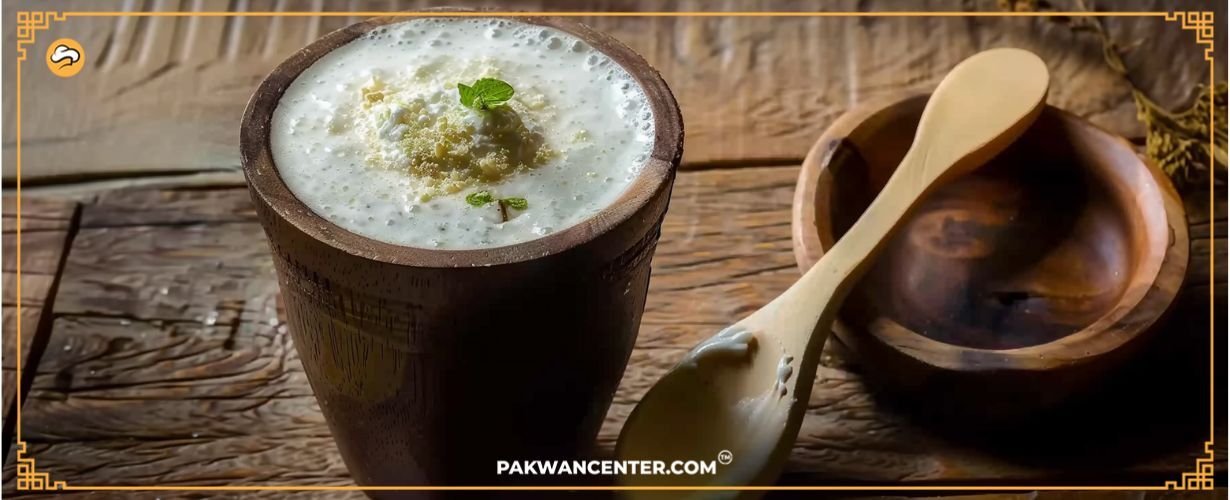
Biryani might look similar to pulao at first glance, but they are fundamentally different. Each bite of biryani offers a unique taste, whereas pulao has its ingredients fried together, blending all the flavors uniformly.
In biryani, dry spices such as cumin, nutmeg, cardamom, and turmeric are layered over pre-steamed rice in a large cooking pot. The final garnish, often carrots or peanuts, is added before serving alongside slices of meat. Unlike pulao, the ingredients in biryani are not mixed until served, presenting a cross-section of the entire dish with each layer’s flavors distinct and appreciable.
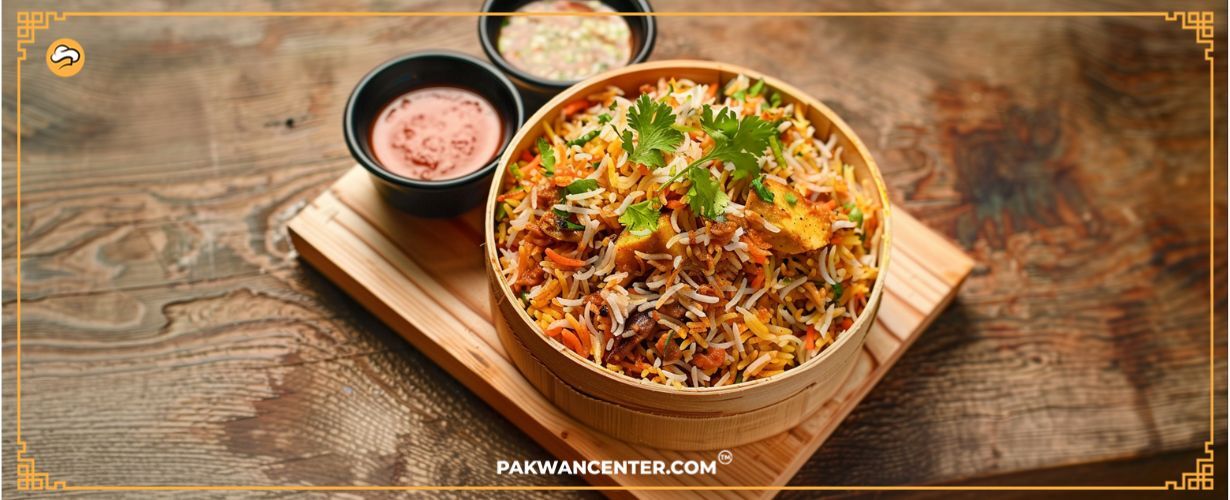
Biryani can be somewhat dry, so it’s often accompanied by raita (a light yogurt dish) as a side. A plate of biryani is perfect for a mid-day snack while exploring the bustling streets of a Pakistani city.
Pakistani tikkas are among the few dishes that Central Asians enthusiastically invite you to savor.
Tikka is a variety of kebab, distinguished by its larger chunks of marinated meat (while kebab meat is usually minced, seasoned, and hand-formed onto the skewer). This dish has been a staple for everyone from nomadic herders to ancient kings with their fatty lambs, and it continues to be a favorite at today’s bustling roadside BBQs in major cities. The timeless and straightforward tradition of grilling meat skewers over an open flame remains a delightful experience for both travelers and locals throughout this region.
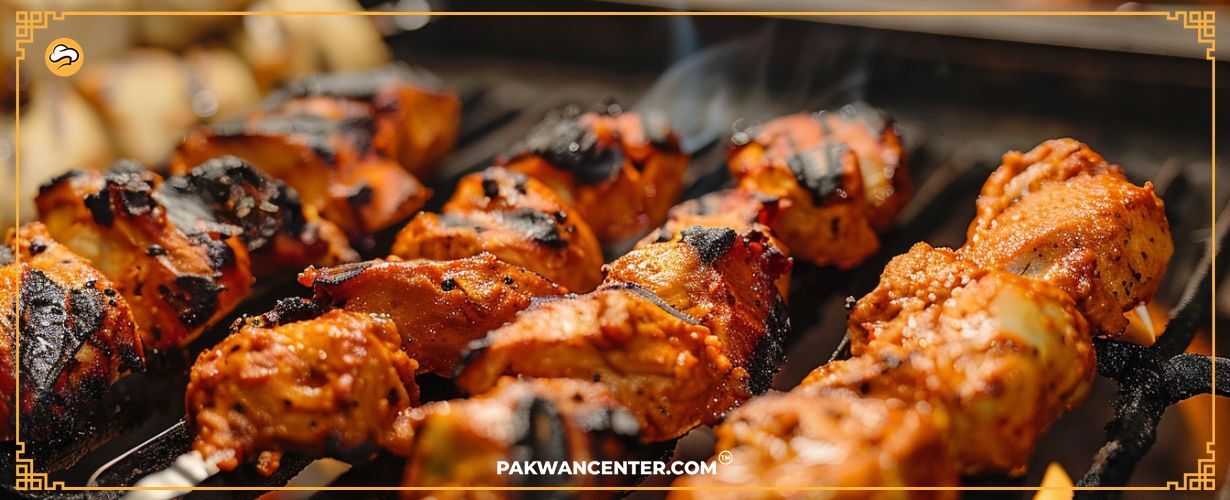
Chapli kebab is not only the pinnacle of Pakistani cuisine but also one of the finest dishes globally.
Also known as “Peshawari Kebab,” this dish is a must-try delicacy. It’s on my list of “foods worth flying for just to eat.” The flavor packed into this hand-formed, deep-fried patty is astonishing. The minced meat, often buffalo, is mixed with dry spices and sometimes fresh ingredients like white onions and cilantro. Some variations include tomato, but cumin seeds, pungent black pepper, and hints of cardamom are always prominent, no matter where I tried them.
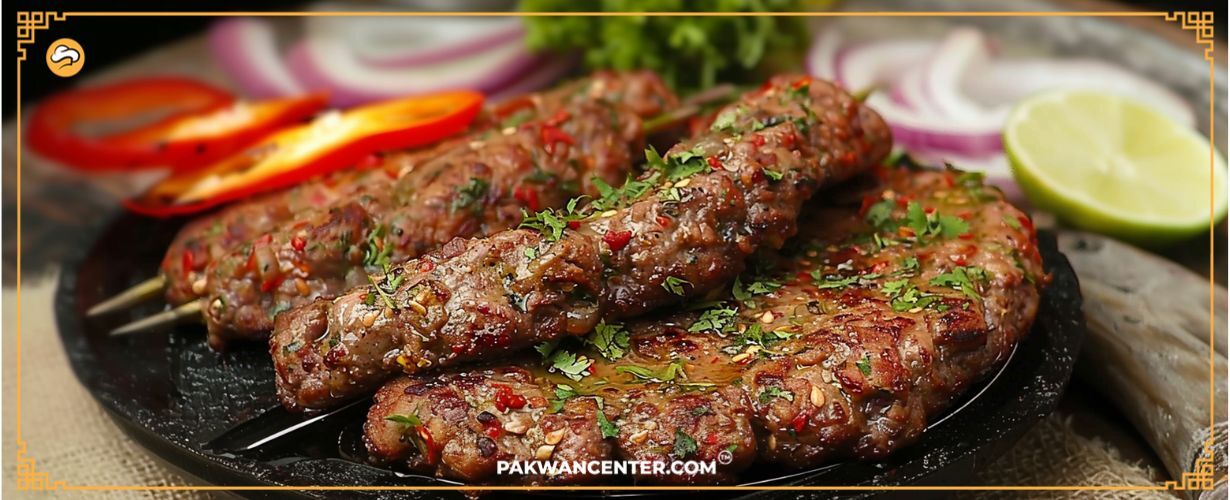
Paya, meaning “legs” in Urdu, is one of the most beloved dishes in Pakistan.
While the dish is simple, it requires a long preparation time. Its incredible flavor is achieved by slow-cooking for hours, often starting the night before it is served in restaurants. The main ingredients include onions, red oil with curry spices, and large bowls of goat legs and feet. After hours of simmering, the tendons and cartilage around the joints become tender and easy to chew, and the red curry broth enhances the dish’s flavor to exceptional levels. Paya is always served with a stack of hot, fresh roti bread, creating an oily, meaty, and delightfully slippery experience that is a must-try in Pakistan.
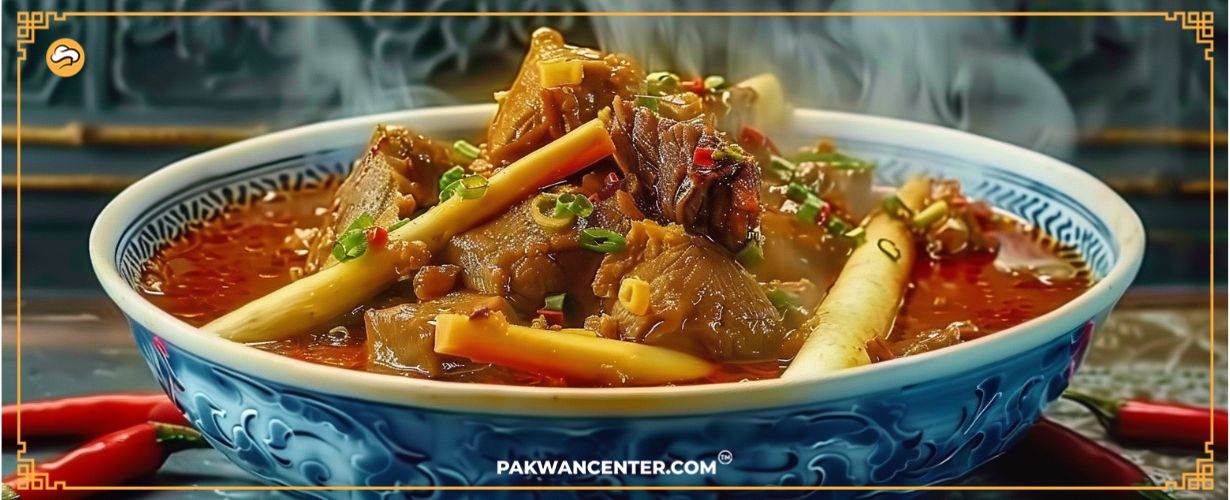
Sajji can be made with various types of meat, but chicken is the most commonly used.
The impressive presentation truly showcases the skill of the grill master. If you’re anything like me, you’ll find yourself irresistibly drawn to the sight. Simply stepping into a sajji restaurant is enough to get your mouth watering. The meat is skewered and displayed like a trophy, with juices dripping and sizzling over a large bed of hot coals. Minimal seasoning is used, as the charcoal’s heat and the quality of the meat are the primary factors. Sajji is typically served with a stack of piping hot roti bread straight from the tandoor oven, as is customary in most Pakistani eateries.
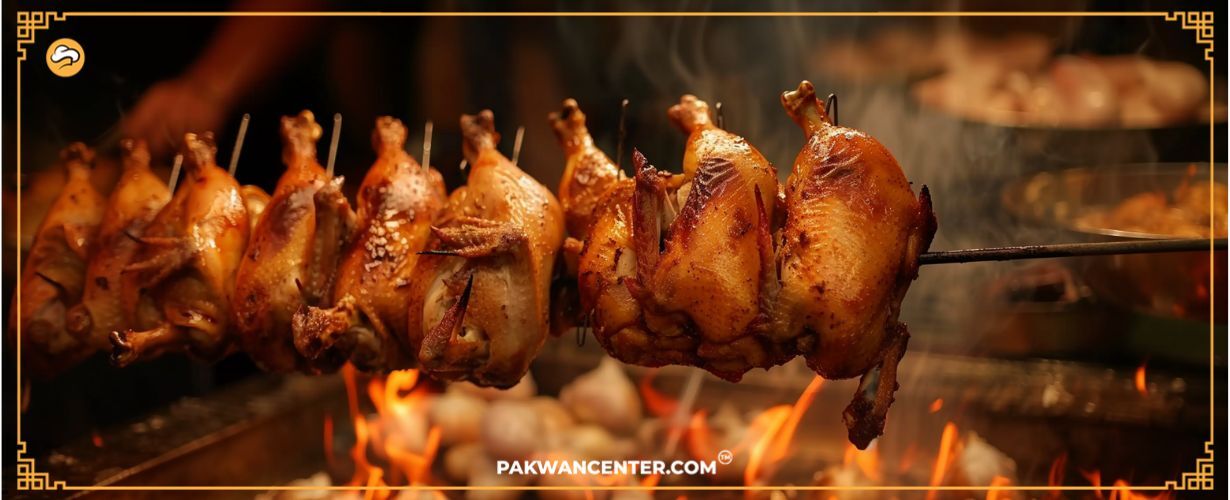
Paratha is the most common breakfast in Pakistan, while halwa puri is a special and cherished morning meal.
In its simplest and most common form, paratha is a ball of dough shaped into a flaky circle and shallow fried in a generous amount of oil or ghee on a hot plate. There are also variations, like aloo paratha, which is stuffed with potatoes, onions, and masala spices. The combination of gooey and crispy layers of dough is one of the most delightful aspects of enjoying a paratha.
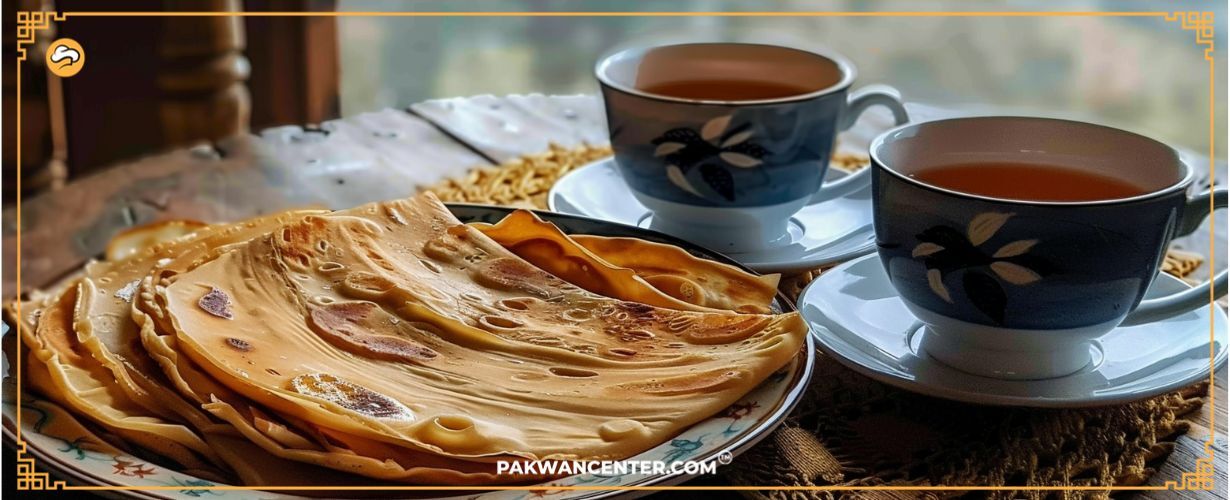
And then there’s the iconic Bun Kebab. “Few things are more quintessentially Karachi than an afternoon enjoying Bun Kebabs,” my local Pakistani friends have often said.
Picture the best hamburger slider you’ve ever had, served with a side of mint chutney. Add a fried egg as an extra topping, and layer everything together while cooking to ensure nothing escapes the frying pan. The small, dense patties are dipped in a batter of lentils, yogurt, and egg before being hand-pressed into a large frying pan. The buns, usually white bread, are cooked to a light crispness right next to the patties and eggs.
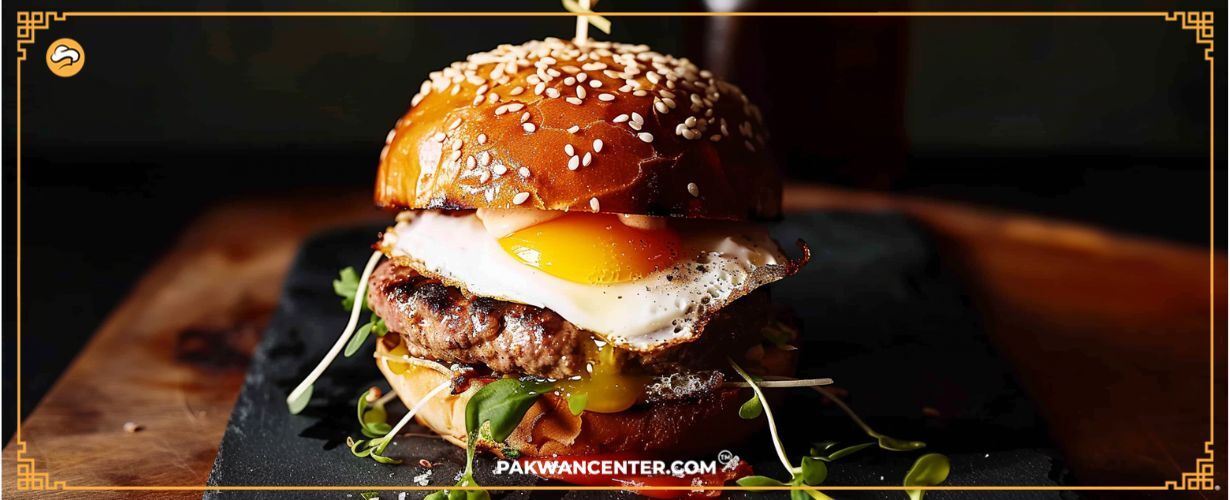
Chaat is one of the most economical ways to enjoy a filling snack, but that doesn’t mean it lacks flavor. (Best Chaat Recipe).
Chaat is a delicious and satisfying snack that’s perfect for eating while standing or on the go. It’s a popular street food in Pakistan.
This dish offers a diverse range of flavors and is more than just a meal; it embodies a cultural experience. Chaat is simple yet ingenious.
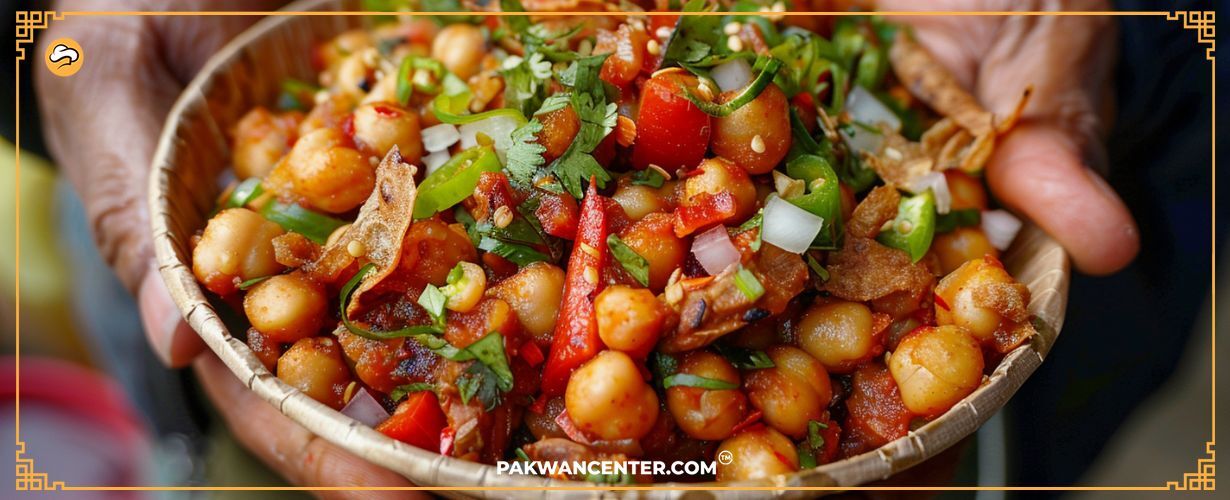
Typically, chaat begins with a base of chickpeas, which are then topped with a mix of tangy, spicy, or cooling sauces. The dish is finished with a layer of crunchy elements, such as fried dough, peanuts, or even modern additions like potato chips. Ordering “the works” might get you tamarind sauce, refreshing mint yogurt, and a variety of fresh vegetables like white onions, cucumbers, or red beets.
At PakwanCenter.com, we highlight the best Pakistani dishes that you must try when in Lahore. From the rich and flavorful biryanis to the succulent kebabs and comforting curries, Lahore’s culinary offerings are sure to delight your taste buds. Whether you’re indulging in traditional favorites or exploring innovative twists on classic recipes, the food in Lahore promises a memorable dining experience. Don’t miss out on the opportunity to savor these exceptional dishes and immerse yourself in Lahore’s gastronomic heritage.